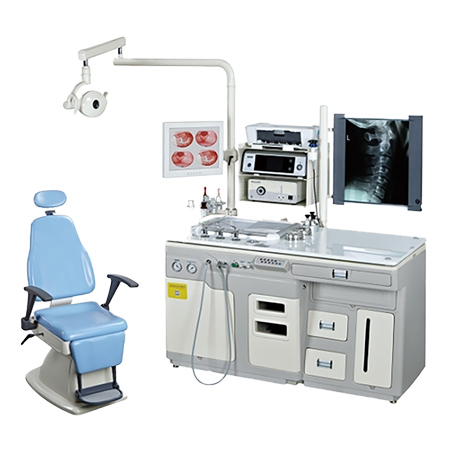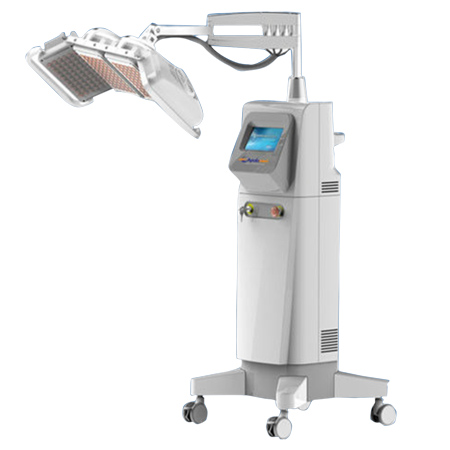ENT Examination Instrument

What is it?
ENT examination instruments are advanced medical devices specifically designed for the evaluation and diagnosis of disorders related to the ear, nose, and throat. These instruments play a pivotal role in the field of Otolaryngology by providing accurate and comprehensive assessments, aiding healthcare professionals in identifying and treating various ENT conditions.
One remarkable aspect of ENT examination instruments is their ability to provide detailed and precise examinations. Equipped with cutting-edge technology, these instruments enable healthcare providers to thoroughly evaluate the intricate structures of the ear, nose, and throat. They allow for close inspection of the tissues, identifying abnormalities, lesions, or any other signs of disease or dysfunction.
These instruments offer a wide range of examination options, tailored to specific areas of concern. For the ear, otoscopes are commonly used, featuring bright illumination and magnification capabilities to visualize the ear canal and tympanic membrane. They enable the identification of conditions such as ear infections, blockages, or structural abnormalities.
In the case of the nose, nasal endoscopes are employed to visualize the nasal passages and sinus cavities. These instruments provide high-definition images, allowing healthcare professionals to assess the nasal mucosa, detect nasal polyps, identify obstructions, and evaluate the overall health of the nasal passages.
When it comes to the throat, laryngoscopes and pharyngoscopes are utilized to examine the structures of the larynx and pharynx. These instruments facilitate a clear view of the vocal cords, vocal folds, and surrounding tissues, aiding in the diagnosis of conditions like vocal cord nodules, laryngitis, or tumors.
Moreover, ENT examination instruments prioritize patient comfort and safety. They are designed to be ergonomic, allowing for ease of use and minimizing patient discomfort during the examination. These instruments often incorporate features such as adjustable angles, flexible shafts, and user-friendly controls, ensuring a smooth and efficient examination process.
Why?
ENT examination instruments are used for a variety of important reasons in the field of Otolaryngology. Here are some key purposes and benefits of using these instruments:
1. Diagnosis: ENT examination instruments are crucial for accurate and comprehensive diagnosis of ear, nose, and throat conditions. They enable healthcare professionals to visualize and evaluate the intricate structures and tissues in these areas, allowing for the identification of abnormalities, lesions, infections, tumors, or other signs of disease. Through detailed examinations, these instruments help in determining the underlying cause of symptoms and guide appropriate treatment plans.
2. Treatment Planning: By providing a clear view of the affected areas, ENT examination instruments assist in planning targeted and effective treatment strategies. The information gathered through examinations helps healthcare professionals make informed decisions regarding medication, surgical interventions, or other therapeutic modalities. This ensures that treatment plans are tailored to the specific needs and conditions of individual patients.
3. Monitoring Progression: ENT examination instruments are used to monitor the progression of certain conditions over time. By capturing images or videos of the examination findings, healthcare professionals can compare and assess changes in the affected areas. This aids in tracking the effectiveness of treatments, evaluating the healing process, and making adjustments to the treatment plan as necessary.
4. Preoperative Assessments: Before performing surgical procedures in the ear, nose, or throat, ENT examination instruments are employed to thoroughly evaluate the anatomical structures involved. This helps surgeons assess any potential risks, plan the surgical approach, and ensure patient safety. It also allows for better communication between the surgical team, improving the overall surgical outcome.
5. Patient Education: ENT examination instruments play a vital role in patient education and understanding of their condition. By visually showing patients their specific anatomical structures and any abnormalities present, these instruments help in explaining the diagnosis, treatment options, and expected outcomes. This empowers patients to make informed decisions about their healthcare and actively participate in their treatment journey.
6. Research and Education: ENT examination instruments contribute to advancements in medical research and education. They provide valuable visual data that can be used for academic purposes, scientific studies, and training future healthcare professionals. By facilitating accurate and detailed examinations, these instruments enhance the overall understanding of various ENT conditions and contribute to improving medical knowledge and practices.
How it works?
The working mechanism of ENT examination instruments can vary depending on the specific instrument being used. However, here are some general principles and techniques commonly employed:
1. Visualization: ENT examination instruments are designed to provide clear visualization of the ear, nose, and throat structures. They typically incorporate light sources and optical systems to illuminate and magnify the areas of interest. The instruments may use fiber optics or advanced imaging technologies such as cameras or endoscopes to capture high-quality images or videos for examination and documentation purposes.
2. Direct Examination: Instruments like otoscopes, which are used for ear examinations, are typically handheld devices with a light source and a magnifying lens. They allow healthcare professionals to directly view the ear canal and tympanic membrane. By adjusting the angle and position of the otoscope, they can visualize different areas and identify any abnormalities or conditions.
3. Endoscopy: Nasal endoscopes and laryngoscopes are often employed for examining the nasal passages, sinus cavities, larynx, and pharynx. These instruments consist of a flexible or rigid tube with a light source and a camera at the tip. The endoscope is inserted into the nostril or mouth, providing a close-up view of the internal structures. The images are displayed on a monitor, allowing healthcare professionals to thoroughly assess the tissues, identify any abnormalities, and guide further diagnosis or treatment.
4. Ancillary Tools: Some ENT examination instruments may incorporate additional tools or attachments for specific purposes. For example, nasal speculums are used to hold open the nasal passages during examination or procedures. Biopsy forceps or brushes may be used to obtain tissue samples for further analysis or diagnosis.
5. Recording and Documentation: Many ENT examination instruments have the ability to capture images or videos of the examination findings.
Equipements
Lorem ipsum dolor sit amet, consectetur adipisicing elit. Architecto modi vel repudiandae reiciendis, cupiditate quod voluptatibus, placeat ad assumenda molestiae alias quisquam



